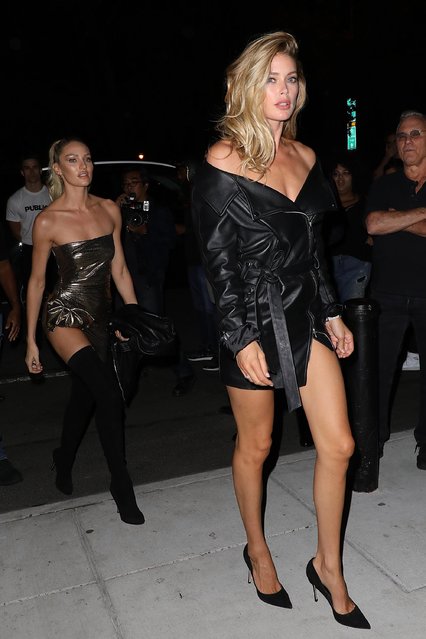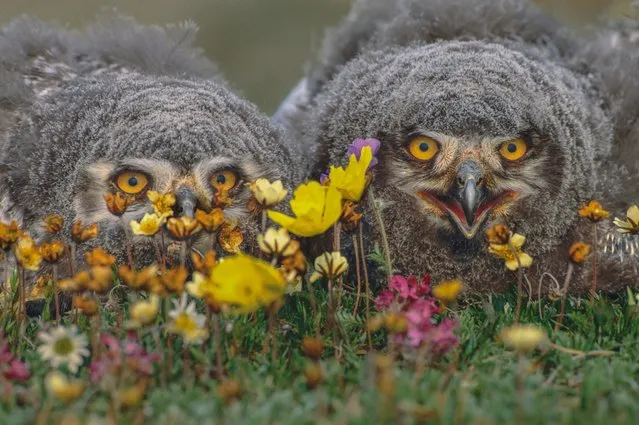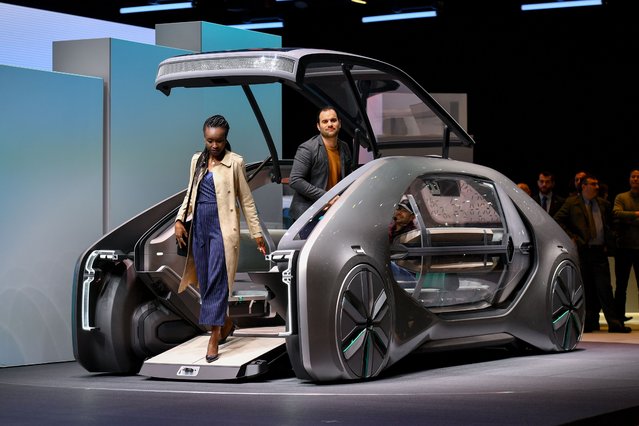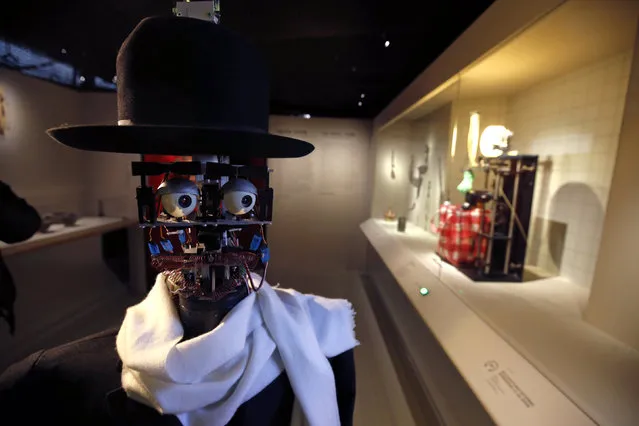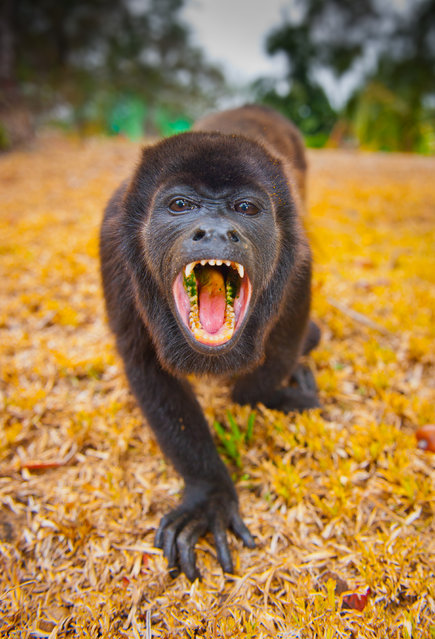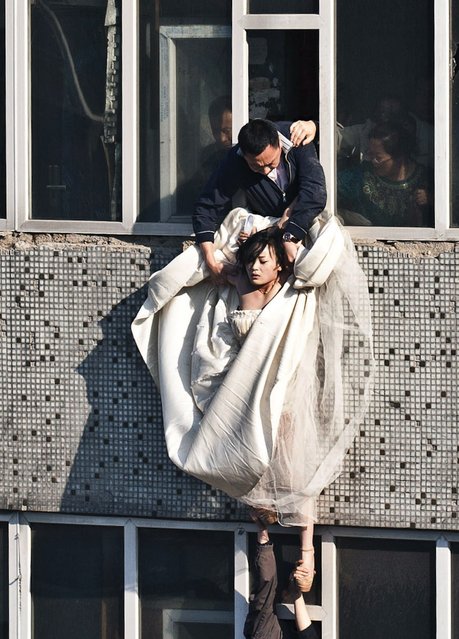
A 22-year-old woman in a wedding gown is grabbed by Guo Zhongfan, a local community officer, as she attempts to kill herself by jumping out of a seven-storey residential building in Changchun, Jilin province. According to local media, the woman tried to commit suicide after her boyfriend of four years broke up with her, just as they were making plans to get married. The woman did not sustain any injuries during the incident. (Photo by China Daily/Reuters)
30 Jan 2013 14:45:00,post received
0 comments



